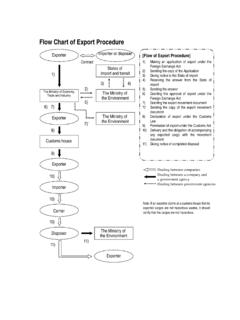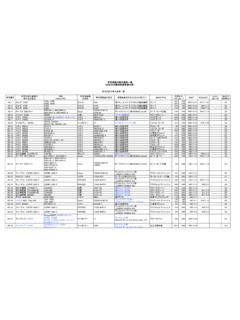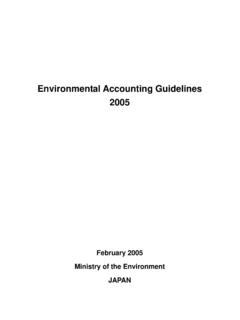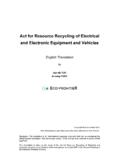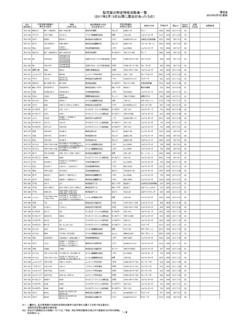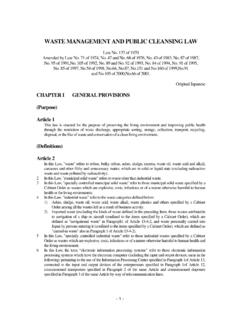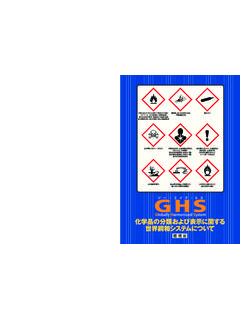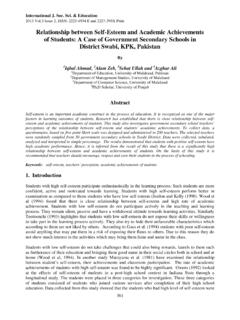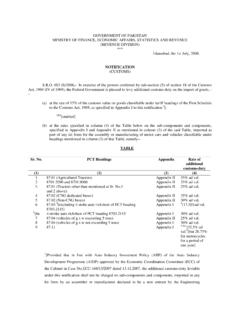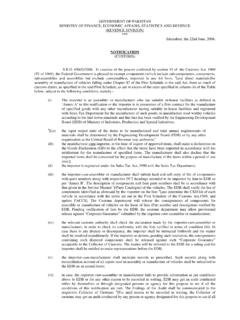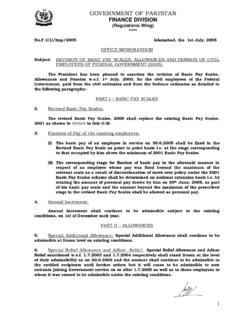Transcription of HOSPITAL WASTE MANAGEMENT ISSUES AND …
1 HOSPITAL WASTE MANAGEMENT . ISSUES AND STEPS taken BY. THE government OF pakistan . OCT 2006. Presentation By: JAWED ALI KHAN. DIRECTOR. MINISTRY OF ENVIRONMENT. Sequence of Presentation Introduction Situational Analysis HOSPITAL WASTE MANAGEMENT Project Main Objectives Project Outcomes Major Recommendations Responsibility for WASTE MANAGEMENT Awareness and Advocacy Training Component Action Plan 2. Introduction z HOSPITAL WASTE include all WASTE arising from healthcare establishments. z Studies in pakistan show that large HOSPITAL 's generate kg of WASTE , per bed per day. Of this, kg can be categorized as biomedical risk WASTE . z There are many small hospitals and clinics which also generate risk WASTE in significant quantities.
2 3. Introduction (contd.). o Daily Medical WASTE Generation (from both public & private sector hospitals): Approx million tons (Source: UN & HSA, MoH). z Improper disposal practices results in reuse of discarded syringes, IV tubes, blood bags and other equipment which is not 0designed for either sterilization or reuse. z If HOSPITAL WASTE is not properly managed and disposed of, it can result in injury by contaminated sharps and infection with Hepatitis B, C, and HIV. 4. Situational Analysis 1. In pakistan there are about 92,000 beds in public sector hospitals 2. pakistan Population 160 million will rise to 250. million by year 2025. 3. Amount of HOSPITAL WASTE generated will increase to alarming rates due to growth of population and healthcare facilities 4.
3 No well established segregation system 5. Frequent dumping of HOSPITAL WASTE with municipal WASTE 5. Situational Analysis (contd.). 6. Major sources of water table pollutions 7. Lapses in Landfill designs 8. Maintenance and monitoring ISSUES of incinerator technology 9. ISSUES related to behaviors change 10. Need proper integrated MANAGEMENT , priority setting & infrastructure development 6. HWM: A Perspective (Contd). Initial Project Outcome: z Draft HOSPITAL WASTE MANAGEMENT Rules 2002. z Draft Guidelines on HOSPITAL WASTE MANAGEMENT z Specifications and Guidelines on 7. Incinerators HWM: A Perspective 2004: Revised HWMP. (Duration: 24 months). MoE re-launched project under IESE. & NUST Consulting (NUST Subsidiaries under MoST) & HSA under MoH.
4 Tasks Assigned: Organize FOUR National Training HWM. Workshops (Cadre-wise, one in each province). Review HWM &. Incinerator guidelines Finalize curriculum for paramedics Launch National Consensus Seminar subsequent to Experts'. Consultative Sessions 8. HOSPITAL WASTE . MANAGEMENT PROJECT. (May 2004 August 2006). Main Objectives Review the existing conditions of HWM. facilities Identify deficiencies in the major cities Propose a financially viable program for elimination of environmental and health hazards Consolidate the work already done in the 10. area Project Outcomes z HOSPITAL WASTE MANAGEMENT Rules 2005. z Guidelines on HOSPITAL WASTE MANAGEMENT z Specifications and Guidelines on Incinerators z Training Manuals for Paramedics 11.
5 Major Recommendations Areas: a. Implementation of HWM Rules 2005 at all levels b. Improvement through HWM Guidelines at District Level c. SOPs: formulation by all healthcare facilities d. Regular Training Programmes / Refreshers (Cadre-wise). e. HWM component needs improvement in curriculum at MBBS/BDS/DVM & nursing / paramedics level f. Mass Awareness g. Stick & carrot policy h. Enforcement of laws needed to nudge hospitals into compliance h. Research 12. Responsibility for WASTE MANAGEMENT WASTE MANAGEMENT Team of the HOSPITAL / Clinic/. Lab. shall be responsible to ensure proper MANAGEMENT of the WASTE generated in the HOSPITAL / Clinic/ Lab. 13. Duties & Responsibilities of WMT. Preparation and Monitoring of Plan Periodic Review Revision or updating Implementation of WMP.
6 Compliance 14. Type of WASTE HOSPITAL WASTE can be broadly be defined into 2 categories Risk WASTE Non Risk WASTE z Infectious WASTE Non risk WASTE is that which is comparable to normal z Pathological WASTE domestic garbage and presents no greater risk, z Sharps therefore, than WASTE from a normal home z Pharmaceutical WASTE - Paper z Chemical WASTE - Packaging - Food WASTE z Radioactive WASTE 15. WASTE Disposal Treatment: Incineration Chemical Disinfection Autoclaving Encapsulation Microwave irradiation etc., Final Disposal Landfill Burying inside Premises Discharge into Sewer etc., 16. Unsafe Acts -- Checklist z Operating without authority z Failing to secure objectives z Failing to give adequate warning signals z Operating or working at unsafe speed z Warning on moving of dangerous equipment z Engaging in horseplay z Failing to use personal protective devices z Tampering with safety devices z Using unsafe equipment and using safe equipment unsafely z Handling, lifting, or carrying unsafe loads z Taking unsafe positions or postures 17.
7 WASTE Minimization WASTE not to be Incinerated Pressurized gas containers Large amounts of reactive chemical WASTE Radioactive WASTE Silver salts or radiographic WASTE Halogenated plastics ( PVC). Mercury or cadmium Ampoules of heavy metals 18. Awareness &. - Advocacy Awareness Through * Posters * Seminars * Letters * Web-Site * Poster Competitions - Advocacy * Media * Lobbying 19. 21. 22. 23. 24. TRAINING COMPONENT. Three Kinds of Training Manuals Developed; English, Urdu & Pictorial Training Video Free Training Programme Refresher Courses 4500 Health Professionals & Allied Staff provided free training in Govt. &. Private Sector HOSPITAL of Lahore. 25. WHY SHOULD THIS PROJECT. BE REPLICATED IN OTHER.
8 CITIES. - TO SHOW SOCIAL RESPONSIBILITY. - IT IS A SUCCESSFUL MODEL. - TO REDUCE THE BURDEN OF. DISEASES. - TO PREVENT REUSE AND REPACKING. OF MEDICAL DISPOSABLES 26. Steps Involved z WASTE Man. Team z W -M. Plan z Training z WASTE Segregation z WASTE Collection z WASTE Storage z Transportation z Disposal 27. WASTE Segregation z Different color coding has to be assigned to various WASTE for effective segregation, as: i. Black : Non-Risk WASTE . ii. Red: Risk WASTE with Sharps. iii. Blue: Risk WASTE without sharps. iv. Yellow: Radioactive WASTE v. Green: Chemicals like Mercury & Cadmium z All this segregation should be done by the individual user. 28. WASTE Segregation z Different color coding has to be assigned to various WASTE for effective segregation, as: i.
9 Black : Non-Risk WASTE . ii. Red: Risk WASTE with Sharps. iii. Blue: Risk WASTE without sharps. iv. Yellow: Radioactive WASTE v. Green: Chemicals like Mercury & Cadmium z All this segregation should be done by the individual user. 29. WASTE Collection z Tobe done by Sanitary staff on daily basis, and transferred to Central WASTE storage facility of the Institute. 30. WASTE Storage: z Storage facility should be covered one, located within the HOSPITAL premises outside the main building, with easy approach for vehicles, and inaccessible to unauthorized persons and animals etc. z Should have sufficient capacity to contain large amount of WASTE in case of incinerator failure. z Separate storage room for radioactive WASTE ( yellow Bags).
10 Z As quoted in Rules, storage at temp 3 8C is not practicable. 31. Transportation On-Site: z All WASTE bags except yellow ones, should be transferred to W. Storage room on daily basis by the sanitary workers by Four wheeled trolleys ( three wheeled are quite uncomfortable). z Different colored bags have to be segregated in the storage room. Off site: z Should be arranged by concerned municipal / local authority. The WASTE should be transferred to the vehicle by sanitary worker under the supervision of WMO. 32. WASTE Disposal Landfill: properly designed and properly Cheapest and easily available. Shredders: All the bulk WASTE of plastic including risk WASTE is disinfected and cut into small pieces and converted into compact form.
